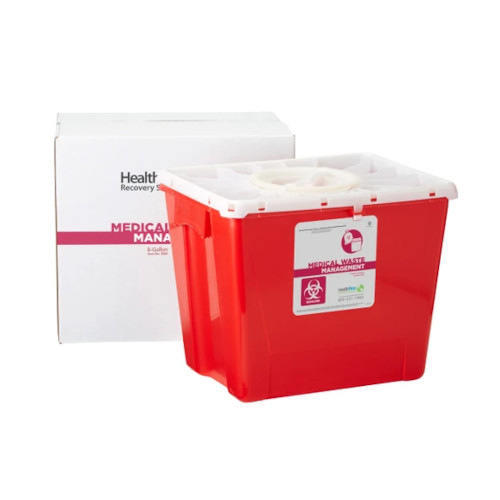Safe and Secure: The Definitive Selection for Expert Medical Waste Removal Provider
Safe and Secure: The Definitive Selection for Expert Medical Waste Removal Provider
Blog Article
Checking Out Different Waste Disposal Options for a Cleanser Atmosphere
In the pursuit of a cleaner setting, the administration of waste disposal has actually arised as a critical focal point for sustainable growth. With a wide range of waste disposal alternatives offered, varying from typical garbage dump approaches to innovative waste-to-energy modern technologies, the selection of just how we handle our waste has significant effects for our earth's wellness.
Recycling Techniques
Applying reliable recycling methods is crucial in decreasing waste and advertising sustainability in our setting. Recycling includes the process of converting waste materials right into recyclable objects to protect against unnecessary disposal. One of the most usual recycling techniques is worldly recuperation, where materials like paper, plastic, glass, and steel are gathered, sorted, and refined to create new products. This procedure not only preserves natural deposits however additionally decreases energy usage and greenhouse gas emissions linked with generating brand-new products from the ground up.
Another vital recycling technique is composting, which involves breaking down organic waste like food scraps and yard trimmings right into nutrient-rich dirt. By integrating these different recycling methods into our waste management methods, we can significantly reduce our environmental impact and move towards an extra lasting future.

Composting Methods
Reliable waste administration techniques, such as recycling approaches, pave the method for a cleaner setting, and now, changing the focus to 'Composting Techniques', we check out lasting methods to break down organic waste for environmental benefit. medical waste removal service.
Composting is a natural procedure that changes natural waste, like food scraps and lawn trimmings, into a nutrient-rich soil modification. The secret to effective composting depends on producing the right balance of eco-friendly materials, such as vegetables and fruit scraps, and brownish materials, like dried out branches and fallen leaves. These materials decompose with the help of bacteria, breaking down the waste right into beneficial compost.
There are different composting strategies readily available to fit different needs. Traditional yard composting entails layering natural products in a container or heap and frequently turning the blend to freshen it. Vermicomposting, on the other hand, utilizes worms to break down organic issue right into garden compost (click here). For those with minimal space, indoor composting systems give a convenient option. By utilizing composting methods, we can lower the amount of waste sent out to garbage dumps while creating a beneficial item for enhancing soil and supporting plant growth.
Incineration Disadvantages and pros
Incineration, as a garbage disposal method, presents both benefits and drawbacks that warrant careful consideration in the world of lasting waste administration practices. On the silver lining, incineration can dramatically lower the quantity of waste, decreasing the demand for land fill area and potentially lowering greenhouse gas discharges. Incineration you can look here likewise permits the recuperation of power with the generation of electrical energy or warm, adding to resource recuperation. Furthermore, the process can be used to destroy dangerous compounds, supplying a safe method for taking care of particular kinds of waste that might position threats to public health and wellness and the setting if left unattended.
Furthermore, the high initial financial investment and operational expenses of incineration facilities present economic challenges, making it a less cost-efficient alternative compared to various other waste administration strategies. Cautious monitoring and law are vital to mitigate these adverse impacts and optimize the advantages of incineration as part of a thorough waste monitoring approach.
Landfill Monitoring Methods
Landfills play an important function in waste administration and environmental conservation by providing a containment system for the disposal of strong waste products. By condensing the waste, the quantity is minimized, enabling for more waste to be fit over time.
In addition, the execution of daily cover techniques is important in lessening smells, stopping trash, and reducing the attraction of pests. Treatment the disposed waste at the end of each day aids to include smells and prevent possible environmental contamination. Furthermore, the surveillance of land fill gas emissions and leachate levels is vital in making certain that environmental standards are fulfilled and that any possible risks to surrounding ecosystems are decreased.

Waste-to-Energy Technologies
One of the cutting-edge strategies to waste administration entails using Waste-to-Energy innovations to transform strong waste into functional energy sources. Waste-to-Energy (WtE) technologies encompass a series of processes that intend to extract energy from waste products via thermal, chemical, or organic means. This conversion procedure not just minimizes the quantity of waste that winds up in landfills but likewise produces useful power resources such as electrical energy, heat, or biofuels.
There are several approaches of Waste-to-Energy conversion, consisting of incineration, pyrolysis, and gasification. Incineration includes burning waste at high temperatures to generate warmth and electrical power. Gasification converts waste right into a syngas, which can be utilized for power generation or chemical production. Pyrolysis breaks down natural products utilizing heats in the lack of oxygen, generating gas, bio-oil, and char.
Applying Waste-to-Energy innovations can help reduce environmental issues related to conventional garbage disposal approaches while concurrently providing an eco-friendly energy source. Careful consideration should be given to exhausts control and making sure the sustainability of feedstock supplies for these innovations to be truly useful for a cleaner atmosphere.

Final Thought
In final thought, checking out various garbage disposal choices such as recycling, composting, incineration, land fill monitoring, and waste-to-energy modern technologies is essential for promoting a cleaner atmosphere - click here. Each approach has its very own advantages and obstacles, but by making use of a combination of these approaches, we can work towards minimizing the quantity of waste that winds up in garbage dumps and inevitably add to a more sustainable future for generations to come
With a wide variety of waste disposal alternatives readily available, ranging from traditional garbage dump methods to innovative waste-to-energy modern technologies, the option of just how we manage our waste has far-ranging implications for our planet's well-being. medical waste removal.Incineration, as a waste disposal method, presents both advantages and disadvantages that merit careful factor to consider in the world of sustainable waste monitoring methods.Landfills play a crucial function in waste monitoring and ecological conservation by offering a control system for the disposal of strong waste products. By compacting the waste, the volume is reduced, allowing for more waste to be fit over time
One of the cutting-edge techniques to waste monitoring involves taking advantage of Waste-to-Energy modern technologies to convert strong waste into useful energy resources.
Report this page